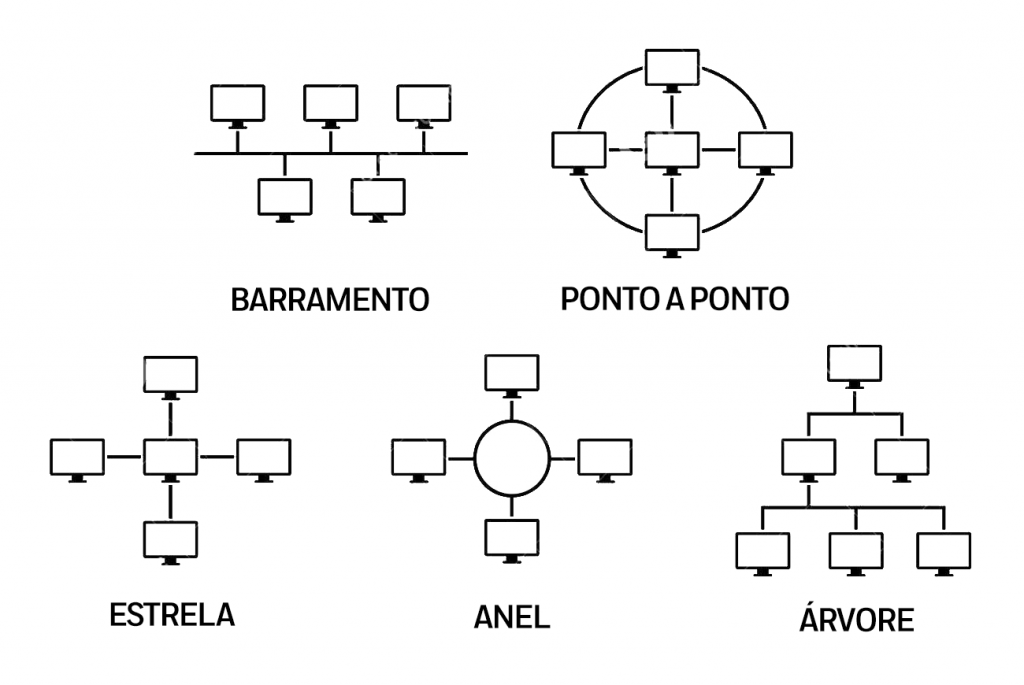The network topology concerns the way in which the elements of a communication network are organized. The concept is applied both physically and logically. Network topologies help to bring more organization, performance and usability, qualities that are increasingly needed when implementing a computer network.
Thus, the concept of network topology is of paramount importance when structuring a stable and usable network. There are seven types available and each one has both advantages and disadvantages in implementation. Want to know more about it? Keep reading and find out.
What is network topology?
Network topology is a term used to define the way in which a computer network is structured. It is necessary when there is a network of computers connected in the same network.
This connection allows for more security, easy file sharing, and streamlined communication.
The concept is interesting because it determines how the machines will connect to each other, considering the hubs and switches. Often, the concept is not taken into account, which brings a series of data synchronization problems and communication errors.
The way in which the machines are connected in the same network interferes not only in the aforementioned aspects, but also in the connection stability. Therefore, the IT area must pay close attention to aspects of the network topology. Next, understand the distinction between physical and logical representation.
Physical and logical network topology

The network topology is divided into seven types, but before understanding this division, it is necessary to understand the representation, which can be done in two ways:
1. Physics
The physical network topology concerns the physical elements that make up the network connection. That is, it talks about the arrangement of cables and connected devices. When talking about physical form, we are referring to physical organization strategies, taking into account the arrangement of machines in the physical space, as well as the connection of cables.
2. Logic
The logical representation concerns the way the network works. That is, here we understand and improve the interface, software, among other things.
The purpose of the logical network topology is to connect the nodes network, to bring even more efficient, agile and intuitive usability.
In the same way were the Anlix's Flashbox solution, is the best option for your operation, bringing agility and efficiency in an intuitive way. Our solution is compatible with different manufacturers and models, in addition to having an integrated environment of interfaces to facilitate customer service.
What types of network topology? Advantages and disadvantages of each

When it comes to network topology types, there is no such thing as a perfect strategy. All of them have advantages and disadvantages, which are related to implementation, maintenance and stability costs.
The more stable types tend to have higher values, while there are simpler and more accessible types that end up being more vulnerable. The type of topology chosen will directly influence the value, which is divided between cable cost, hubs, switches and all the necessary structure to implement the solution.

Find out more about each type below:
Ring
As the name suggests, the ring topology is performed in a circular fashion. This means that each of the machines has two neighboring machines, through which data transmission is carried out. That is, it is a circle of connected devices, with unidirectional data flow and pass through each node until it reaches its destination.
This type of topology is very efficient for error-free data transmission, has great reliability, and can be implemented in large networks. However, the failure of a single device can undermine the stability of the entire network, which increases the risk of delay.
Tree
This type of topology gets its name because its arrangement resembles the branches of a tree, following a hierarchy. This network topology is made from a node central, which will distribute among the other devices. Its main advantage is to minimize vulnerability compared to ring topology, in addition to making error detection easier.
However, its disadvantage is precisely the central device, which if it suffers any failure, all other devices will be affected.
bus
A pattern that brings simplicity and practicality. In this type, all data flows through a single cable. The main advantage is that it is an economical and versatile strategy, with simplified maintenance.
However, its disadvantage is similar to the ring type: the network is vulnerable to machine failures. After all, they are all centralized in a single flow.
Star
Here, we have arms that start from a central point, in the shape of a star. The advantage is that the isolated failure does not compromise the flow, since it starts from the central node towards the other devices. But, just like the tree type, in failures in the central node, there will be damage to the entire data flow.
Point to point
The point-to-point type is what guarantees the greatest simplicity. The nodes all connect to each other. Because of this characteristic, it is the most common type in residential installations, for example, PC1 > Modem < PC2.
It is ideal for establishing fast communication between two devices. Its disadvantage is that it does not meet the needs of grandiose installations.
Mesh
the topology mesh is well known for its stability. It is made by connecting all devices together, an excellent solution for robust operations. However, the greater the number of devices, the more significant the costs and complexity of installation.
The biggest advantage of this type is that the failure of individual or even some device units is not able to bring down the network, that's why it is so stable.
Its main disadvantage is the cost and complexity of installation. It is recommended for robust operations and is a type of network topology that requires more planning for implementation.
hybrid
As the name suggests, it is a type that mixes different types of network topology. It can include two or more types of patterns and is widely used, precisely because it provides a flexible and customizable solution. Its biggest advantage is the adaptability, according to the number of devices and budget available.
Its biggest disadvantage is its complexity and, like the mesh type, it requires more planning.




Leave A Comment